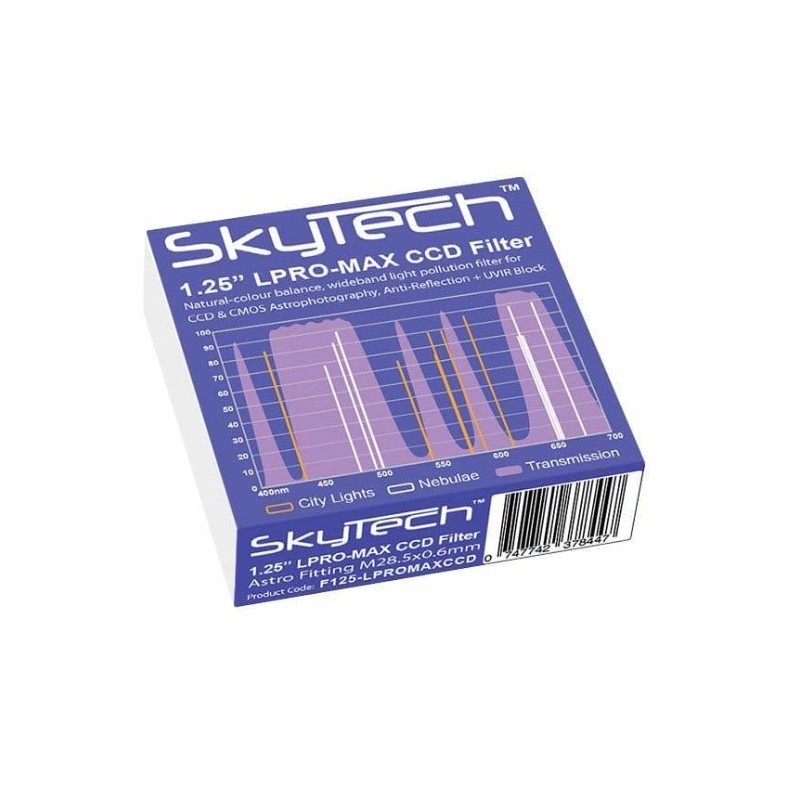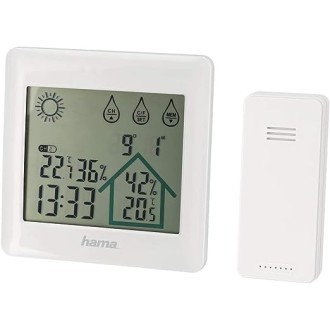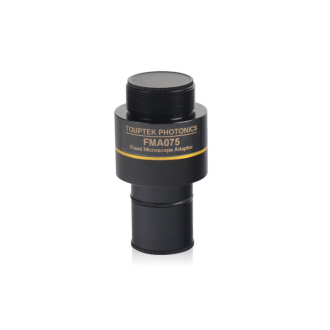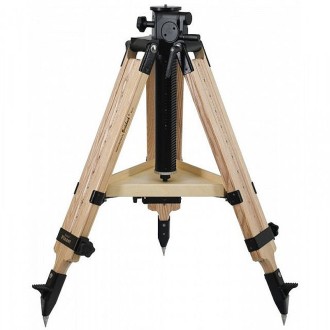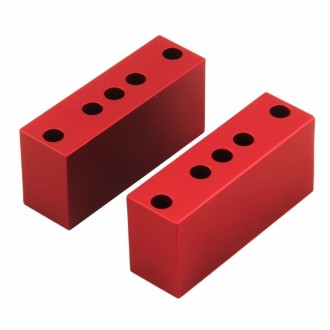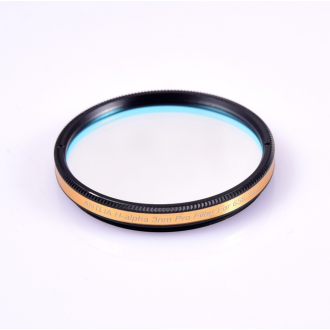Deliver it 13/20 days
ALTAIR SkyTech F125-LPROMAXCCD 1.25" LPRO-MAX CCD filter
SkyTech's LPRO-MAX filter is designed to enhance the visibility of stars and deep sky objects by blocking light pollution and transmitting light from deep sky objects. It is therefore the best choice for imaging with moderate light pollution where a more natural color balance is desired.
| Carrier | Description | Estimated Delivery | ||
|---|---|---|---|---|
 |
Home delivery - International | Home delivery - International |
Friday, 30 May - Friday, 6 June |
|

Home delivery - International
Home delivery - International
Estimated delivery:
Friday, 30 May - Friday, 6 June
SkyTech's LPRO-MAX filter is designed to enhance the visibility of stars and deep sky objects by blocking light pollution and transmitting light from deep sky objects. It is therefore the best choice for imaging with moderate light pollution where a more natural color balance is desired.
Our original LPRO-MAX specialty coatings are more complex to manufacture than the UHC and CLS coatings, therefore the cost is higher than these filters, yet they transmit all desirable emission nebula wavelengths, with the added advantage of allowing more starlight and reflection nebulosity for a more natural color balance.
Therefore, LPRO-MAX can be used to image galaxies and achieve higher contrast with the background sky, enhancing Ha regions and giving them a more structured appearance, in dark sky locations or even in areas with moderate light pollution.
Galaxies and nebulae:
Skytech's LPRO-MAX is better for imaging galaxies than a CLS or UHC filter because it has a wider transmission band. This results in minimal color cast in broadband emission targets such as galaxies, reflection nebulae and globular star clusters. Often, emission nebulae are embedded in dusty areas that reflect light and these details are "lost" with narrowband, UHC and CLS filters that transmit emission wavelengths and not much else. The LPRO MAX not only allows all the usual emission wavelengths to pass through, but also allows better visibility of dusty reflection nebulosity and dust. Both emission and reflection nebulae are covered with the LPRO-MAX.
Wide-field images of the Milky Way:
The LPRO-MAX's specially tuned passband provides even more natural color reproduction than CLS or UHC filters because it allows more starlight to pass through than UHC and CLS filters, providing a more natural-looking Milky Way. Less post-processing is required to remove color casts when using LPRO-MAX.
Camera compatibility :
SkyTech LPRO-MAX filters are suitable for CMOS and CCD color and monochrome cameras. LPRO-MAX blocks ultraviolet and infrared light for sharper stars. Monochrome cameras can also be used with the LPRO-MAX to capture the luminance channel in LRGB images in light polluted areas. The 1.25" LPRO-MAX filter is compatible with Altair's entire GPCAM range and Hypercam 183 series CMOS cameras (the LPRO-MAX screws into the camera's 1.25" front revolver or Altair's magnetic filter holder with optional 1.25" slider). The GPCAM / Hypercam DSLR lens adapter is also compatible: the 1.25" LPRO-MAX filter fits inside the housing behind the lens, protected from dust.
Visual use :
LPRO Max is a good choice for visual use where galaxies and stars, as well as nebulosity, are desired. Due to the wider band transmission, the LPRO-MAX filter is suitable for viewing deep sky objects with smaller aperture telescopes, such as refractors as well.
How this filter works:
The SkyTech LPRO MAX filter suppresses artificial illumination, such as mercury vapor lamps, high and low pressure sodium vapor lights, and unwanted daylight caused by neutral oxygen emission in our atmosphere (sky glow). Scattered and reflected glare from commercial LEDs used in street lighting is also significantly suppressed. The filter transmits light from deep sky objects, with high transmission of ionized oxygen O-III (496 nm and 500 nm), hydrogen beta / N-beta (486 nm), N-II (654 nm and 658 nm), H-alpha (656 nm) and S-II (672 nm). In addition, it blocks ultraviolet (UV) and infrared (IR) light resulting in sharper stars. By selectively blocking light pollution and transmitting these desirable wavelengths, the contrast and detail of deep sky objects is greatly improved. Click image for higher resolution (opens in a new window):
Technical Specifications:
- Precision machined aluminum housing with standard 1.25" "Astro" filter thread (M48 x 0.75 mm thread pitch).
- Precision ground Schott glass substrate material.
- Glass thickness 1.85 mm.
- Surface quality: 60/40
- Optically fine polished 1/4 wavefront and parallelism of 95% transmission of the main transmission lines
- 95% transmission of the main emission lines of the nebula (i.e. Ha 656 nm, OIII 496 nm and 500 nm, SII 672 nm and H-beta 486 nm).
- 0.1% out-of-band transmission, specifically the major artificial light pollution emission lines (i.e., Na 589 nm, Hg 435 nm and 578 nm).
Dichroic filter coatings:
Multi-layer anti-reflection coating (AR coating). Additional UV and IR blocking layer.
Special high homogeneity coating process with electron beam gun evaporation and ion-assisted deposition coating technology for durability and scratch resistance as well as CWL (center wavelength) stability without drift with temperature change.

